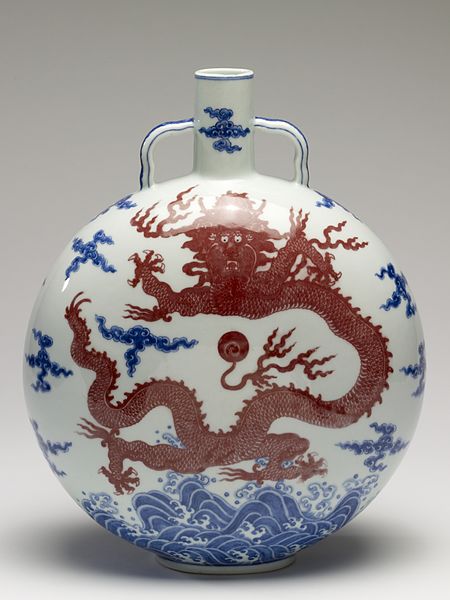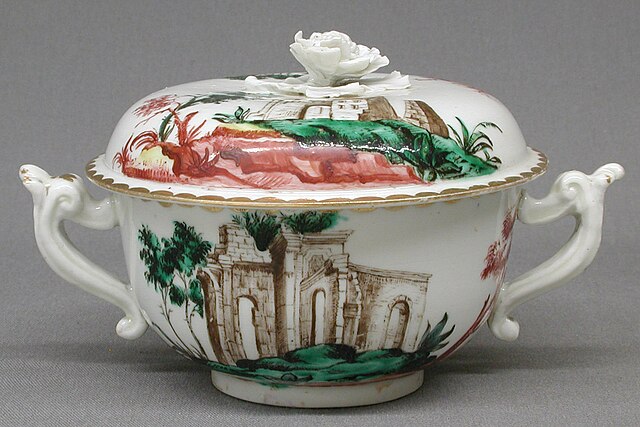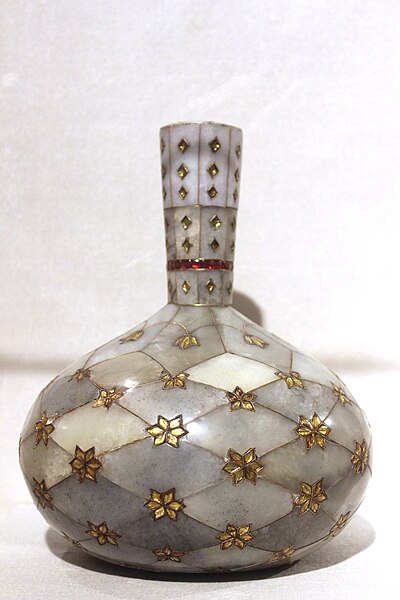In architecture and decorative art, ornament is decoration used to embellish parts of a building or object. Large figurative elements such as monumental sculpture and their equivalents in decorative art are excluded from the term; most ornaments do not include human figures, and if present they are small compared to the overall scale. Architectural ornament can be carved from stone, wood or precious metals, formed with plaster or clay, or painted or impressed onto a surface as applied ornament; in other applied arts the main material of the object, or a different one such as paint or vitreous enamel may be used.
Rococo interior of the Wilhering Abbey (Wilhering, Austria), with a trompe-l'œil painted ceiling, surrounded by highly decorated stucco
Chinese flask decorated with a dragon, clouds and some waves, an example of Jingdezhen porcelain
Khmer lintel in Preah Ko, (east of Angkor, Cambodia) style, late 9th century, reminiscent of later European scrollwork styles
18th-century Rococo balcony, Bavaria. The form is itself ornamental, and further decorated in painted plasterwork
The decorative arts are arts or crafts whose aim is the design and manufacture of objects that are both beautiful and functional. This includes most of the objects for the interiors of buildings, as well as interior design, but typically excludes architecture. Ceramic art, metalwork, furniture, jewellery, fashion, various forms of the textile arts and glassware are major groupings.
Le Nove porcelain, Bowl with cover, 1765–70, painted with ruins, soft-paste porcelain
The front side of the Cross of Lothair (c. 1000), a classic example of "Ars Sacra"
Wine Pot, c. 18th century, China, Walters Art Museum
Surahi, Mughal, 17th century CE. National Museum, New Delhi








